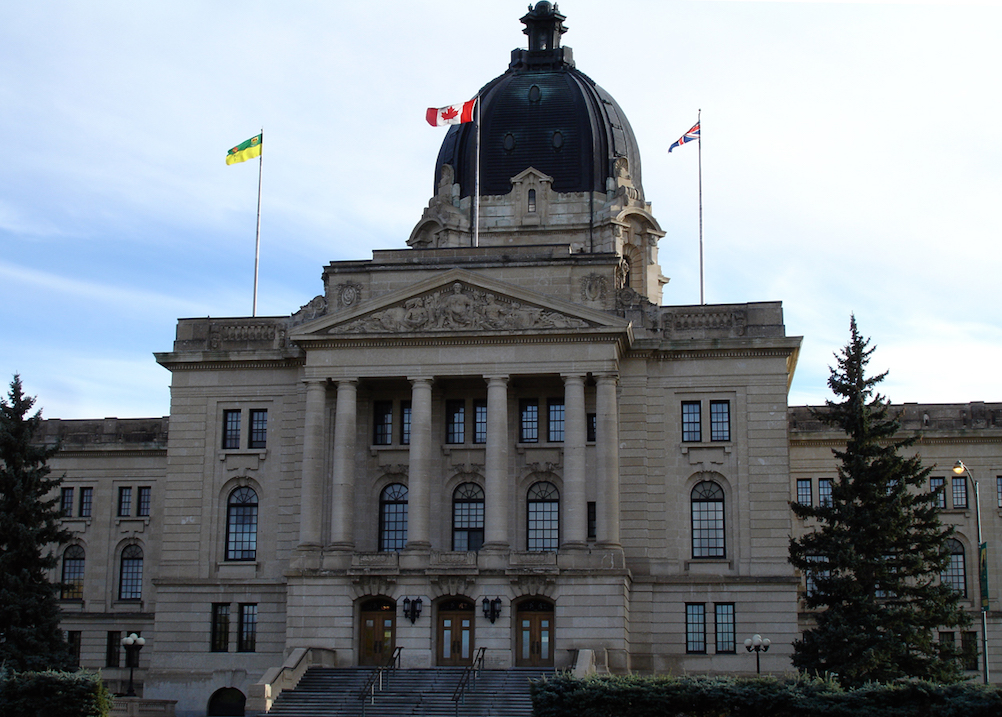On April 10, the Saskatchewan government tabled its 2018-19 budget. Here are 10 things to know:
1. This year’s budget was quite status quo.
Provincial expenses for the upcoming fiscal year are forecast at $14.6 billion, while total spending on health will see a 2.5 per cent increase. Revenue forecast for 2018-19 is $14.2 billion. No major tax changes were announced. (Last year’s budget, by contrast, announced significant tax changes and spending cuts.)
2. Saskatchewan still has one of the lowest total debt-to-GDP ratios in Canada.
Saskatchewan’s total debt represents 26 per cent of its GDP. Ontario’s is more than 45 per cent, and Manitoba’s is nearly 67 per cent. A modest deficit of $365 million is forecast for 2018-19, while the government is predicting a return to balance by 2019-20.
3. Saskatchewan continues to struggle on the revenue side of the balance sheet.
In 2014-15, the provincial treasury took in nearly $1.3 billion in revenue from the oil and gas sector. For the upcoming fiscal year, it’s expected to take in just $700M from that sector. Last year’s budget increased the provincial sales tax (PST) from 5 per cent to 6 per cent, while also expanding the range of goods against which the provincial sales tax applies.
4. Last year’s budget announced a cut to corporate income taxes, but this decision was later reversed.
Last year’s budget announced a one percentage point reduction in the corporate income tax rate, to take place in two half-point phases. But last fall, the Wall government reversed course on this decision.
5. Last year’s budget also announced a cut to the personal income tax rate, but then altered course here as well.
Specifically, the government announced last year that it would decrease personal income tax rates by one percentage point, to take place in two half-point steps. But after announcing the first half-point reduction, it recently announced it would not go through with the second half-point reduction.
6. Social assistance benefit levels in Saskatchewan remain very low.
For example, a single employable adult on social assistance in Saskatchewan receives approximately $9,000 annually on which to live (and pay rent). A person with a disability gets between $12,000 and $16,000 annually, depending on the severity of the disability. Every year, the value of inflation erodes the value of these benefits. (All of these figures can be found here.)
7. This budget announced the phasing out of a rental housing benefit for low-income households.
The Saskatchewan Rental Housing Supplement provided some additional rent money for low-income households with either children or a disability; but this budget announced that no new applications will be accepted as of July 1. The provincial government expects this will save the provincial treasury $5 million in the first year (or 0.03 per cent of the total budget). Without the rent supplement in place, I believe it’s likely we’ll see more people becoming homeless in Saskatchewan, which itself comes with added costs to the public treasury.
8. The budget’s decision to extend the PST to used car sales may disproportionately impact low-income households.
The budget removes the PST tax exemption on (light) used car sales, which may translate into almost $100 million in new annual revenue. This will make it slightly more expensive to purchase a used car in Saskatchewan. The budget also restores the trade-in allowance when determining the PST — so, when a car owner is trading in a vehicle, they will only pay the PST on the difference in price of the trade in and the selling price for the vehicle they’re buying.
9. The budget fails to address on-reserve child poverty.
According to Census data, Saskatchewan’s on-reserve rate of child poverty (as measured by the After Tax Low Income Measure) is nearly 70 per cent, second highest in the country after Manitoba. Neither this year’s budget nor last year’s takes meaningful steps towards addressing that.
10. There’s some reason for cautious optimism about the future.
In 2017, Saskatchewan saw a 10 per cent increase in potash sales from provincial firms, an 8.7 per cent increase in international exports and a 12.6 per cent increase in manufacturing sales.
In Sum. This budget, while relatively status quo, is mostly bad news for low-income households in the province. And this comes one year after a budget that announced significant cuts to social programs.
The author wishes to thank Daniel Béland, Simon Enoch, Dionne Miazdyck-Shield and one anonymous reviewer for invaluable assistance with this blog post. Any errors lie with the author.
Nick Falvo is Director of Research and Data at the Calgary Homeless Foundation. You can follow him on Twitter at @nicholas_falvo. This blog was first posted on CCPA’s Behind the Numbers blog.
Photo: daryl_mitchell/Flickr
Like this article? Please chip in to keep stories like these coming.




